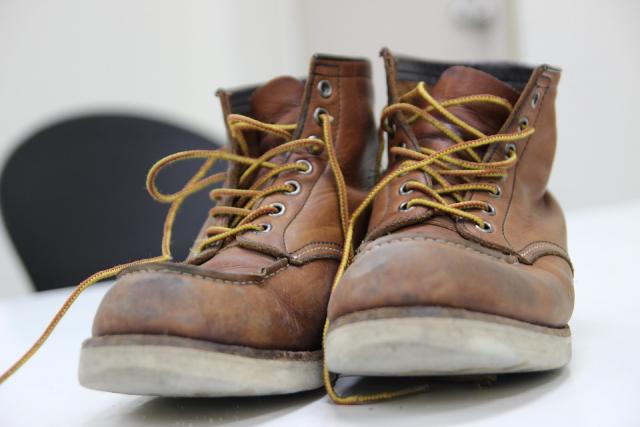Work Boots
 If your occupation requires you to wear work boots, there are several things you need to know before you shop. There are a multitude of different occupations that require the use of work boots on the job, and making sure you buy the right kind starts with your employer’s suggestion. For example, those who work in construction may be required to wear steel-toed work boots. Choosing the right work boots also starts with figuring out what they will be used for most. Do you do a lot of standing at the job site, or are you walking for the majority of your day? Do you climb a lot of stairs or crawl in tight spaces? Finding the right support for your feet is the number one way to pick out the best work boot. One of the most common conditions for those who wear work boots on the job is plantar fasciitis. Basically, the heel of the foot is not getting the proper support that it needs. Your work boots should not only support the heel, but also have proper cushioning in the balls of the feet, the sides, and enough “wiggle-room” for the toes. The laces should go up over the top of the ankle to provide support, and some employers may require the top of the boot to reach the lower calf. This provides more stability while walking and reduces the risk of ankle injury. Other foot problems with those who wear work boots include pain in the balls of the feet. This can be remedied by finding work boots that have just the right amount of proper cushioning in this area. Work boots should be rugged and durable, but also provide TOTAL support of all areas of the feet. As mentioned before, if you have high or low arches, adjust these areas with orthotic inserts. It is important that you walk around a little in your new work boots before purchasing them, as the way they feel might change after 15 minutes or so. Those who wear work boots at their job generally don’t report having pain before work, but rather begin to experience it 15-45 minutes after being on their feet and working.
If your occupation requires you to wear work boots, there are several things you need to know before you shop. There are a multitude of different occupations that require the use of work boots on the job, and making sure you buy the right kind starts with your employer’s suggestion. For example, those who work in construction may be required to wear steel-toed work boots. Choosing the right work boots also starts with figuring out what they will be used for most. Do you do a lot of standing at the job site, or are you walking for the majority of your day? Do you climb a lot of stairs or crawl in tight spaces? Finding the right support for your feet is the number one way to pick out the best work boot. One of the most common conditions for those who wear work boots on the job is plantar fasciitis. Basically, the heel of the foot is not getting the proper support that it needs. Your work boots should not only support the heel, but also have proper cushioning in the balls of the feet, the sides, and enough “wiggle-room” for the toes. The laces should go up over the top of the ankle to provide support, and some employers may require the top of the boot to reach the lower calf. This provides more stability while walking and reduces the risk of ankle injury. Other foot problems with those who wear work boots include pain in the balls of the feet. This can be remedied by finding work boots that have just the right amount of proper cushioning in this area. Work boots should be rugged and durable, but also provide TOTAL support of all areas of the feet. As mentioned before, if you have high or low arches, adjust these areas with orthotic inserts. It is important that you walk around a little in your new work boots before purchasing them, as the way they feel might change after 15 minutes or so. Those who wear work boots at their job generally don’t report having pain before work, but rather begin to experience it 15-45 minutes after being on their feet and working.

